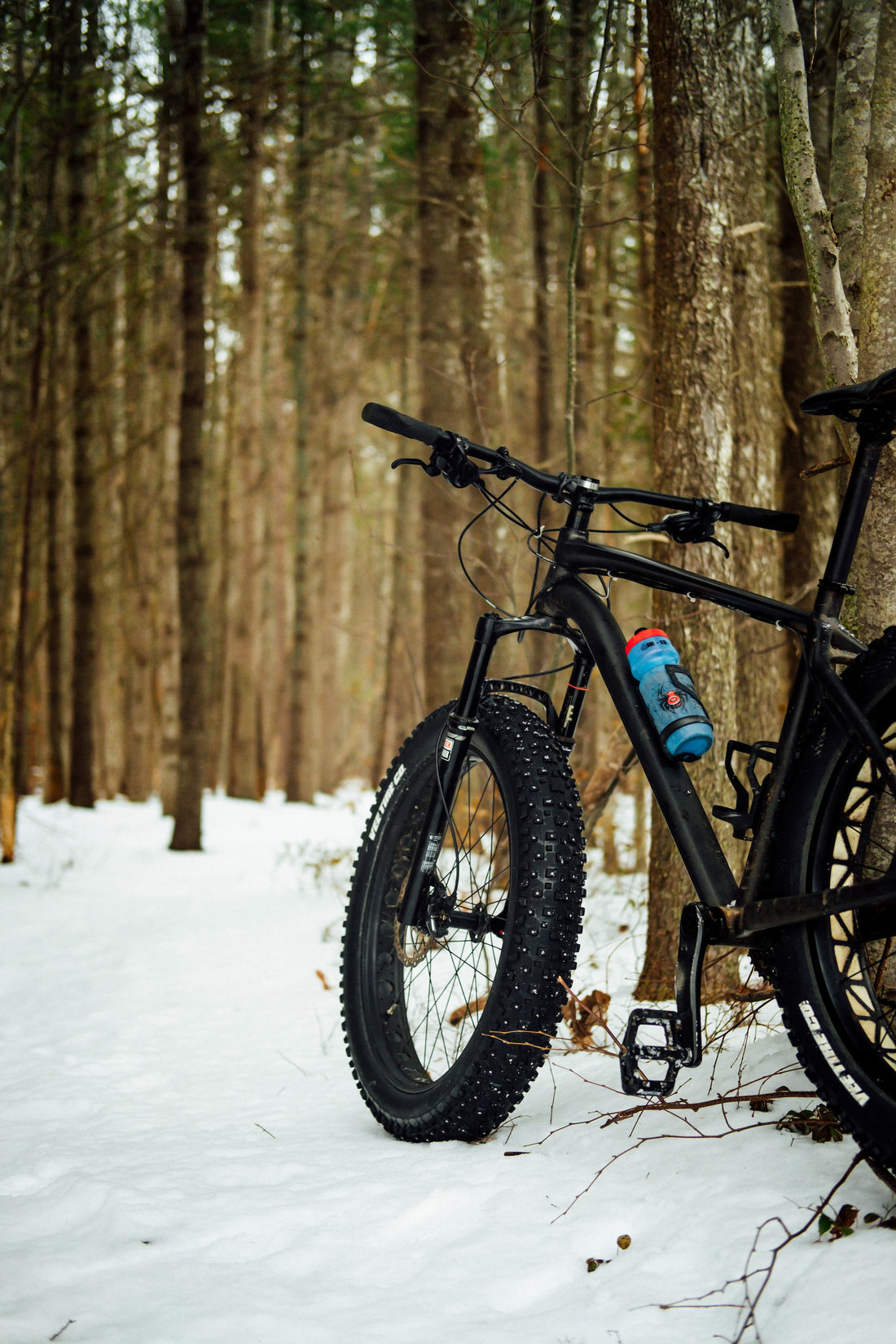
All-Terrain Triumph: Expert Guide to Customizing Your Fat Bike for Ultimate Performance
As fat bikes continue to conquer diverse landscapes and revolutionize off-road adventures, it's time to fine-tune these versatile machines for optimum performance. This blog post will reveal the secrets of transforming your trusty two-wheeler into an all-terrain powerhouse, capable of handling everything from snowy mountain slopes to sandy beaches with ease.
Get ready to unleash the full potential of your fat bike, and embark on exhilarating expeditions that leave even the most seasoned riders in awe!
Why Customization Matters for Peak Performance
When it comes to fat bikes, customization is more than just a matter of personal style – it's the key to unlocking your bike's full potential and optimizing it for the terrain you'll be conquering.
As no two riders or environments are the same, adapting your fat bike to your specific needs ensures a smoother, more efficient, and enjoyable ride.
Here are the 3 main reasons why you should consider customizing your fat bike
- Tailored Comfort and Efficiency: Customization ensures your fat bike aligns with your unique riding style, body type, and preferences, resulting in increased comfort and efficiency. By optimizing elements like saddle height, handlebar width, and gear ratios, you can enhance your riding experience, reduce fatigue, and conquer challenging terrains with ease.
- Overcoming Terrain Challenges: Customization enables you to adapt your bike to diverse terrains, overcoming obstacles specific to each landscape. Fine-tuning components like tire width and pressure, suspension, and braking systems improves handling, traction, and performance, increasing your bike's versatility, and boosting your confidence and safety.
- Enhanced Durability and Longevity: Customizing your fat bike with high-quality, terrain-specific components enhances its durability and longevity. Upgrading parts like drivetrain, rims, and tires protects your bike from wear, reduces maintenance costs, and extends its lifespan. Investing in robust components designed for your preferred riding environment ensures a more reliable and enjoyable trail experience.
Contrary to common misconception, customizing your fat bike doesn't require a technical background or hefty investments. With the right knowledge and guidance, you can easily enhance the performance of your ride while keeping costs low.
In the next section, we'll look at the customization basics and identify the components that will boost your bike's performance and unleash its full potential. Let's dive in!
Fundamentals of Fat Bike Customization
Customization is the art of transforming an ordinary fat bike into an extraordinary extension of oneself – a perfect fusion of form, function, and personal flair. As the range of available components can be overwhelming and intimidating, we've gathered a few tips for fine-tuning your ride with ease.
1. Tire Selection and Pressure
Tire selection affects traction, stability, and comfort, making it essential for optimizing a fat bike's performance. Here's the recommended tire width for various terrains:
- Sand and snow: Wide, low-profile tires (4.8 inches or more) with large, widely-spaced knobs.
- Mud and loose dirt: Aggressive, narrower tires (around 4 inches) with tall, widely-spaced knobs.
- Rocky and technical trails: Reinforced sidewall tires (3.8 to 4.5 inches) with a mix of small and large knobs.
In terms of tire pressure, lower pressures are usually better for rough terrain – the softer the tires, the more grip you'll get. A quick rule of thumb is to reduce your pressure by 1-2 PSI for every drop in temperature.
Tire pressure ranges for specific terrains:
- Sand and snow: 5-10 psi
- Mud and loose dirt: 10-15 psi
- Rocky and technical trails: 12-18 psi
2. Gearing and Drivetrain Modifications
The ideal gear ratio and crankset largely depend on your riding style, preferred terrain, and strength. When it comes to gearing, here's the suggested range for different terrains:
- Steep climbs and technical terrain: Lower gear ratios with smaller chainring and wider-range cassette.
- Flat and moderate terrain: Balanced gear ratios for efficient pedaling.
- High-speed and downhill sections: Higher gear ratios with larger chainring and narrower-range cassette.
There are available upgrades for drivetrains for better durability and performance, such as:
- Electronic shifting systems: Quick, precise, and effortless gear changes.
- Chainring and cassette options: Experiment with sizes and ranges for ideal performance; consider single, double, or triple chainring setups.
Consult a professional bike mechanic for compatibility and installation when modifying your fat bike's gearing and drivetrain.
3. Suspension System
Adding a suspension system to your fat bike can significantly improve comfort, control, and traction on rough and uneven terrain. Suspension systems help absorb impacts from obstacles, reduce rider fatigue, and maintain better contact between the tire and the ground, enhancing overall ride quality.
Tuning your suspension allows you to adapt your bike's performance to specific terrains and personal preferences. Key aspects of suspension tuning include:
- Soft and hard tuning: Adjust air pressure or preload for terrain and preference (soft for rough terrain, hard for smoother trails).
- Compression and rebound settings: Fine-tune based on riding style and terrain (faster compression for rough trails, slower for smoother trails; balance rebound for optimal recovery).
Regularly inspect and service your suspension for peak performance, and experiment with settings to find the ideal balance for your riding conditions.
Accessory Additions for Weather Adaptation
Customize your fat bike with suitable accessories based on specific conditions and personal preferences for a safer, more comfortable, and controlled riding experience. Some of the most popular accessories include:
- Mudguards and fenders: Protect from water, mud, and debris in wet conditions. Choose options compatible with fat bike tire width and frame.
- Lights and reflectors: Enhance visibility and safety in low-light or inclement weather. opt for appropriate brightness and beam patterns and wear reflective clothing.
- Handlebar grips and bar ends: Improve control and comfort in wet or slippery conditions with non-slip grips and ergonomic designs. Bar ends offer alternative hand positions and better leverage.
- Frame bags and panniers: Equip your fat bike with frame bags or panniers to carry essential gear, tools, and supplies for extended rides or bikepacking adventures. select weather-resistant materials and secure attachment systems to ensure your belongings stay protected and stable during your ride.
- Clipless pedals and shoes: Enhance power transfer and bike control by using clipless pedals and compatible shoes. This combination allows for better foot retention, especially in wet or slippery conditions, and increases pedaling efficiency.
Remember that there are various components and accessories available to equip your fat bike for any condition. Take the time to customize your setup and enjoy your trail rides even more!
Conclusion
As you embark on the journey to customize your fat bike, remember that the true joy of cycling lies in the freedom to explore, conquer diverse terrains, and adapt to the ever-changing conditions of the great outdoors. With each thoughtful modification, you not only improve your bike's performance but also deepen your connection to the world around you, creating unforgettable experiences on the trail.
As the saying goes, 'There's no such thing as bad weather, just bad gear.' At Big Cat Bikes, we are happy to provide expert advice and quality products so that you can ride with confidence and make the most of every adventure! Contact our team today to get started. Happy trails!
